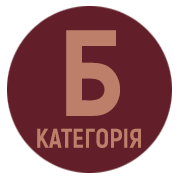MYTHOLOGICAL CONCEPTUALIZATION IN THE PLAY “THE BLIND” BY MAURICE MAETERLINCK
DOI:
https://doi.org/10.24919/2522-4565.2021.47.32Keywords:
myth, intertext, symbolism, conceptual system, concept, image, worldviewAbstract
The article deals with the reconstitution of the mythological worldview in the early playwright of the prominent Belgian French-speaking dramatist of Symbolist period Maurice Maeterlinck who reformed the “new drama” during the period of “Belle Epoque” that made a great impact on the European and Ukrainian theatre. The analysis is made based on the well-known play of the Symbolist period, “The Blind” (1890). After the examination of the contemporary philological works and the delimitation of the problems non investigated yet the mythological intertextual analysis have revealed the functioning of such mythic conceptual structures as DEATH = NIGHT, OLD, MOON, COLD (images of fallen leaves, birds flying away, winter imagery), WET (images of sea, river, crying), UNDERGROUND (image of grotto). Besides, positive semantics is also found in the conceptualization LIFE = LIGHT (personages Child and Young Blind Girl). The drama shows the functioning of three mythological isotopes of imagery: LIFE positively marked, LIFE negatively marked and DEATH positively marked. The final polyvalence suggests the possible recovering of the view for the personages Child and Young Blind Girl that could be revealing the semantics of LIFE as LIGHT conforming to the idea of the Reintegration of Souls in Plato’s and Vergil’s works that makes an alternative to the catastrophic scenario of the play. The text is depicting the mythically connoted formula of the transcending the negatively marked isotope LIFE – DEATH to the positively marked concept DEATH that is relevant for the conception of “tragic optimism” developed by Maurice Maeterlinck. Therefore it seems perspective to continue the study of the mythological conceptualization in Maeterlinck’s playwright to delimitate the mythological worldview of this prominent Frenchspeaking writer.
References
Голосовкер Я. Логика мифа. Москва : Наука, 1987. 218 с.
Евсюков В. Мифы о вселенной. Новосибирск : Наука, 1988.177 с.
Мифы народов мира : энциклопедия. Москва : Советская энциклопедия, 1980. Т. I. 672 с.
Тахо-Годи А. Мифологическое происхождение поэтического языка «Илиады» Гомера. Античность и современность. Москва : Наука, 1972. С. 196–215.
Чистяк Д. Міфопоетична картина світу в бельгійському символізмі. Київ : Радуга, 2016. 272 с.
Чистяк Д. Мова міфопоетичного космосу в українській та бельгійській символістській поезії. Київ : Саміт-книга, 2019. 608 с.
Шкунаева И. Бельгийская драма от Метерлинка до наших дней. Москва : Искусство, 1973. 448 с.
Aristophane. Théâtre. Paris : Garnier freres, 1889. T. 2. 518 p.
Eschyle. Promètheus enchaîné. Les Suppliantes. Les Sept contre Thèba. Agamemnôn. Les Khoèphores. Les Euménides. Les Perses. Paris : Alphonse Lemerre, 1872. 380 p.
Euripide. Théâtre. Paris : Alphonse Lemerre, 1884. T. 1. 611 p.
Homère. L’Odyssée, Hymnes homériques et Batrakhomyomakhia. Paris : Alphonse Lemerre, 1893. 486 p.
Lutaud Ch. Le Mythe maeterlinckien de l’anneau d’or englouti. Annales Fondation Maurice Maeterlinck. 1978. T. XXIV. P. 57–119.
Maeterlinck Maurice. Petite trilogie de la mort: L’Intruse. Les Aveugles. Les Sept Princesses. Bruxelles : Luc Pire, 2009. 303 p.
Platon. Dialogues. Paris : Rey et Gravier, 1846. T. 6. 347 p.
Platon. La République. Livres 1–5. Paris : Rey et Gravier, 1846. 323 p.
Sophocle. Les Trakhiniennes. Oidipous-Roi. Oidipous à Kolônos. Antigonè. Philoktètès. Aias. Èlektra. Paris : Alphonse Lemerre, 1877. 503 p.
Virgile. L’Ėnéide. Paris : Delalain, 1825. T. I. 435 p.



